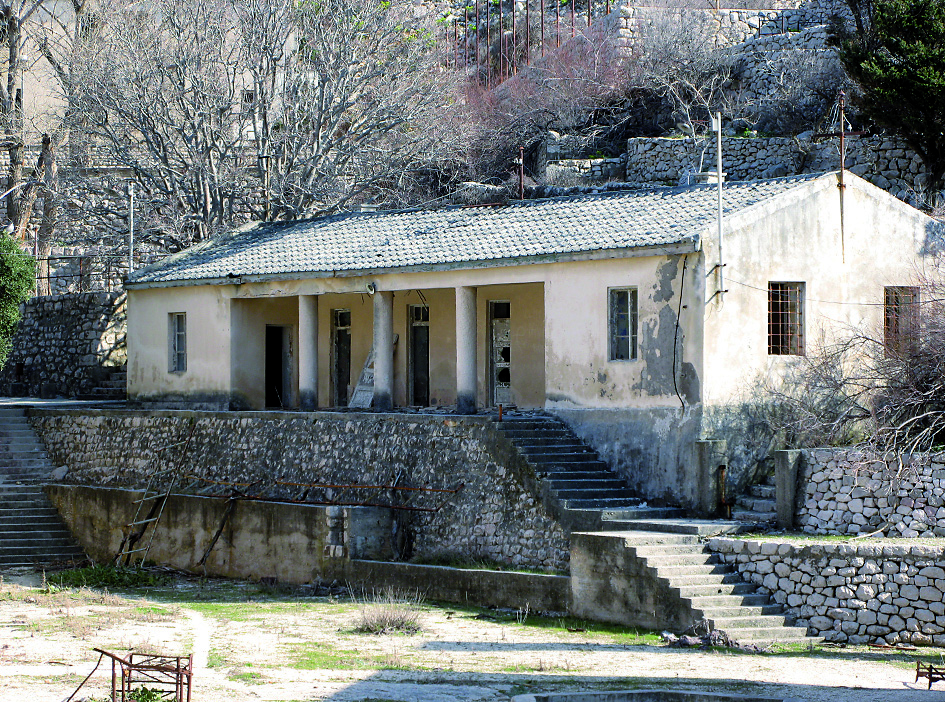4. Camp self-administration centre

Photograph: Darko Bavoljak
The Goli Otok camp had a peculiar administrative structure. The UDBA, the Yugoslav secret police, was itself almost never present within the camp. It established a system of camp self-administration where privileged inmates controlled the other convicts. An entire system of privileges and internal hierarchy among inmates was established to function as a lever of “political re-education”. The building that housed the Centre, the highest level of the camp’s self-administration, is one of the few authentic camp buildings in the Wire. Here, the camp’s self-administration bosses would coordinate tasks received from the UDBA, implementing work plans or accepting inmates and collaborators. This place was especially hated by the camp population, as the prisoners knew very well that the obedient inmates housed at the Centre were the long arm of the UDBA. The Centre leadership enjoyed many privileges that common inmates could only dream of: beds, unlimited food and drink, even alcohol. They did not need to work, but they made others work. Incidentally, similar organisational models, with inmates having authority over other inmates on behalf of the authorities, could be found in Nazi prison camps, as well as in the Soviet Gulags.
